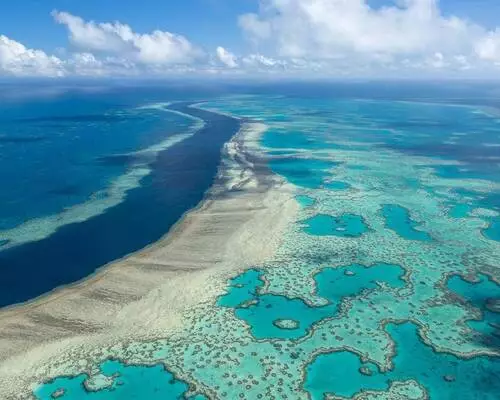Australian scientists have succeeded in developing a turbine machine that creates clouds, by spraying ocean water into the sky from a ferry, to reduce the heat on the country’s famous Great Barrier Reef that is in danger of massive bleaching and death due to rising temperatures.
Australian scientists are of the view that a fleet of mist machines could prolong the life of the coral reef, which is one of the biggest natural attractions in the country, while governments work to eliminate greenhouse-gas emissions.
The water droplets sprayed by the mist machine evaporate leaving only tiny salt crystals which float up into the atmosphere allowing water vapour to condense around them, forming clouds, a Reuters report cited Daniel Harrison, who runs the project, as saying.
"If we do it over an extended period of time for a few weeks to a couple of months when the corals are experiencing a marine heatwave we can actually start to lower the water temperature over the Reef," said Harrison.
"The modelling shows that the cloud brightening is enough to stop the reef declining and to actually see it through this period while we reduce our carbon emissions," he told Reuters.
Also read: UK has turned hotter, wetter and sunnier due to climate change
However, the project has raised concerns among some scientists abroad, in part because the Australian group has published little about its work. Environmentalists outside Australia objected to the project last year after news of the first trial broke citing the controversial global geoengineering issue. There could be similar criticism when details emerge of the second trial which took place in March this year, according to a report in Nature magazine.
Harrison stresses that the cloud-brightening project is about local adaptation to climate change, not global geoengineering, because its application would be limited in both space and time.
It’s also just one part of a larger US$220 million Reef Restoration and Adaptation Program (RRAP) launched last year by Australia to investigate and develop techniques and technologies to save the country’s reefs.
According to the report in Nature, some researchers, however, are pleased to see marine cloud brightening move from theory to the field, including US scientists working on a similar project that has been struggling to get into the field for nearly a decade. “This is an early example of how climate disruption can drive interest in these things,” says Sarah Doherty, an atmospheric physicist who manages the Marine Cloud Brightening Project at the University of Washington in Seattle. Members of the team provided the initial nozzle design for the mist machine and have been tracking the Australian group’s progress.




















